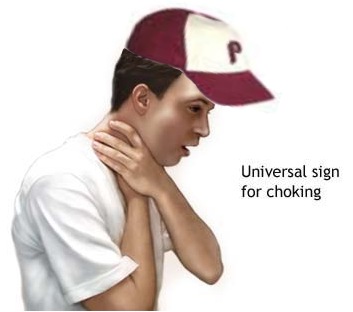Edgar Martinez announced his impending retirement on Monday. The 41-year old lifelong Seattle Mariner thanked the city and its fans for their support, and even got misty-eyed as he made the announcement. Sadly, rather than allowing all of us to appreciate his career, to bask in the glow of his varied accomplishments, the news media immediately began a feeding frenzy to find cases and supporters, for and against Edgar's candidacy for the Baseball Hall of Fame.
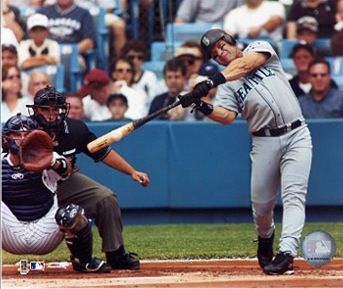

OK, so there are sadder things in the world than a 41-year old multi-millionaire announcing his retirement. Most people who retire at 65 aren't multi millionaires, and many of them have done a lot more to improve society than Martinez has, but hey, this is a baseball blog. If you want to read about World Peace, surf somewhere else.
Proponents of enshrining Edgar Martinez in Cooperstown have, roughly, three legs on which to stand:
1) His two batting titles.
2) His accomplishments as a Designated Hitter
3) His career percentages
Two Batting Titles, (or Why isn't Ferris Fain in Cooperstown?)
The first issue is fairly easy to dispel, in and of itself. Two batting titles, while two more than most players ever get, is not such a unique accomplishment.
Willie McGee has two of them, as does
Dave Parker. So do
Pete Runnels and
Ferris Fain, and nobody in particular thinks that they deserve a plaque in upstate NY. Heck,
Bill Madlock has twice as many batting titles as Edgar does, and he dropped off the HoF ballot immediately after he became eligible in 1993, failing to garner even the requisite 5% of the vote to stay on the ballot another year.
Of course, Martinez had more going for him than
just the batting average. Those batting titles he won in 1992 and especially in 1995 came with power and patience, as he hit 18 andd 29 homers in those two seasons, respectively, scored 100 runs or more both years, hit at least 46 doubles both years, walked often enough to have an on-base percentage above .400 both seasons, and even stole 14 bases in 1992! Can you imagine
Edgar Martinez stealing bases!? Me neither.
The trouble with Edgar has never been what he did, but rather what he didn't do, or, more accurately, couldn't do. In the two seasons between those batting titles, 1993-94, he played less than one season's worth of games, due to injuries and the Strike, and batted a pedestrian .271 combined. In the two seasons before his first batting title, he hit just over .300, but with only moderate power, and despite ESPN analyst and former Edgar teammate
Harold Reynolds' protestations, a below-average defensive thirdbaseman at best.
But thankfully, erstwhile Mariners manager Lou Piniella did not allow him to continue maing a fool out of himself at the hot corner for long, and before 1994 was out, Edgar was the full-time DH. Which brings us to our next issue:
Accomplishments as a DH, (or Why Isn't Cliff Johnson in Cooperstown?)
Edgar's supporters are fond of telling you that he has more homers and more RBI as a DH than anyone else in history, as well as the highest batting average. His competition in this department, chiefly, comes from Harold Baines, Hal McRae, Don Baylor and a handful of othe rplayers whose names we know, and whose candidacy for Cooperstown are rarely touted. The players with the most career games as a DH are:
Rank Name Games OPS+
1 Harold Baines 1652 120
2 Hal McRae 1427 122
3 Edgar Martinez 1389 151
4 Don Baylor 1285 118
5 Chili Davis 1184 121
6 Paul Molitor 1174 122
7 Jose Canseco 837 131
8 Brian Downing 824 122
9 Cliff Johnson 746 125
10 Andre Thornton 738 122
11 Reggie Jackson 630 139
The only players on this list eligible for the Hall who are actually in it are
Paul Molitor and Reggie Jackson, and as you may recall, they had pretty good careers besides those games in which they didn't play defense. Harold Baines and Jose Canseco will both likely fall a little short as well. The former because he was never great, only good, for a long time, the latter because he
was great, but not for very long. No one else on this list even generates any debate, nor should they. But, you may say, Edgar's career adjusted OPS surely makes him more valuable than the likes of Cliff Johnson and Andre Thornton, no?
Yes, which brings us to our third and final category:
Career Percentages, (or Why Ted Williams IS in Cooperstown!)
This is where it really gets tough to keep Edgar out. Edgar's adjusted career OPS coming into 2004 was 151, i.e. that he was roughly 51% better, in that category, than the league in which he played over the course of his career. Not many men can be 50% better than the league in a season, buch less a career spanning the better part of two decades. That ranks him #32 in the history of baseball, and of the 31 in front of him on that list...
...19 are already in the Hall of Fame
...7 are either still active (Bonds, Bagwell, Thomas, Ramirez, Piazza & Giambi), or too recently retired (McGuire), but are likely HoFers themselves when eligible, if they keep playing reasonably well.
...2 are not eligible either because they didn't play enough seasons (Dave Orr, 8) or because they took money from gamblers to throw the 1919 World Series (Joe Jackson)
...and 3 either had too brief a career (Pete Browning, and Charlie Keller) or were named "Dick Allen".
So let's say that Giambi
doesn't make it, but the other six potentially eligible ones do, that would mean that 25 of the 28 eligible players made it in, or 89%, as they say in France. Oh, and about two thirds of the next 20 on the list also either are in or will be when they're eligible.
Martinez is 20th in career on-base percentage, with a .420 mark. Among those in front of him in that category, three are not eligible for the Hall ever, due to lack of playing time or the aforementioned lack of not throwing the World Series, and two are still playing, but will be in the Hall (Thomas and Bonds) when their times come. Only one, Max Bishop, is a valid but unworthy candidate, and he hit only .271 with no speed or power, so you can see why. Edgar certainly had decent power, if not speed.
Only 16 players in history (I think) with at least 5000 career at-bats have maintained career averages of .300 batting, .400 on-base and .500 slugging, and all eligible players are in the Hall. The three active players (Bonds, Thomas, Larry Walker) besides Edgar either will be in the Hall or had a lot of help from very thin air in Colorado. The remainder of that list comprises a veritable Who's Who of sure-thing Coopertowners: Babe Ruth, Lou Gehrig, Tris Speaker, Ty Cobb, Ted Williams, etc.
This is about where the stats kind of stop helping. While Edgar did have five seasons with 100 or more runs scored, and six seasons with 100+ RBI, those are situational stats, so we shouldn't lend them too much credit. While he did hit 20+ homers eight times, he cracked 30 only once, topping out at 37 in 2000. Homers are cheap these days, so 20, or even 30, don't mean what they used to mean.
Split-Personality Disorder
There's kind of an interesting split in Edgar's career. Let's take Edgar's best group of, say, seven seasons. (Jayson Stark does this with Jack Morris, so it must be OK, right?) From 1995-2001, he hit .329/.446/.574 in almost 4400 plate appearances, averaging 100 runs, 100+ RBI and 100+ walks per season while playing over 140 games per year on average.
For seven straight years, he was perhaps one of the five best hitters in baseball, right-handed or otherwise. In that span, only two players who saw action in 130+ games hit .300/.400/.500 in a season more than four times. Manny Ramirez did it five times, and Edgar did it seven.
In a row. Fewer than 20 players have even done that seven times
in their careers, and only six have done it seven times or more in a row: Lou Gehrig (12), Stan Musial (8), Babe Ruth (8, plus another streak of 6!), Harry Heilmann and Frank Thomas (7). Oh, and Edgar.
The rest of Edgar's career entailed a still-pretty-darn-good .295/.390/.459 line, but due to injuries and the incompetence of Mariners management (more on this coming up...), those numbers were amassed in fewer than 4000 plate appearances spread out over eleven seasons, or about 300 at-bats per year. But why? He wasn't hurt
that much, was he?
Well, no. I had thought he was, but I looked for his stats on
The Baseball Cube, and found a different picture.
Martinez was signed by the Mariners as an undrafted free agent in 1982, and was sent to A-Ball for a handful of games in which he did not impress in 1983. However, in 1984, he hit .303 with 15 homers, 32 doubles and more walks than strikeouts in high-A Midwest League ball, so they promoted him to AA in '85. He only hit .258 with no power in Chatanooga, but he walked a ton, so they gave him a cup of coffee in AAA that same year, and he hit .353 in 20 games. The next year they sent him back to AA, where he hit .264 with doubles power, but also walked 89 times while only striking out 35 times.
In 1987, playing full-time in the AAA Pacific Coast League, he hit .329 with 40+ extra base hits and 82 walks (compared to 47 strikeouts) and even hit .372(!) in a September cup of coffee with the big league club. But did they keep him up there? Nope, sent him back to AAA.
He played a handful of games with the Mariners in May of 1988, but was hitting only .143 after a month of jerking him back and forth between the bench and the field, so Edgar was sent back to Calgary. There, he was back to his old tricks, hitting .363, getting on-base more than 40% of the time, slugging over .500, walking more than he struck out, yadda-yadda-yadda.
And for what purpose was Edgar wasting his career in Canada? For whom?
Jim Presley, uh-huh.
The King of Swing and Miss hit .230/.280/.355 while manning the hot corner for the Mariners in 1988. Worse yet, Glenn Wilson hit only .250/.286/.324 playing regularly in the outfield, and Ken Phelps was clearly past his prime as the regular DH, which is why they brought in Steve Balboni in June, and sent Phelps to the Yankees in July for Jay Buhner. With six regulars on
the team hitting .263 or lower, you'd think they could have found a place for Edgar
somewhere! Edgar did get ANOTHER cup of coffee with the Mariners in September, bringing his average for the year up to .281, from the .143 mark at which it had stood in May when they sent him back to AAA. He hit .412 that month, so they kept him in Seattle to begin the following year.
At age 26, he started the season with the big club, but struggled as they only played him part-time, and after a dismal July in which he hit only .097, they sent him back to AAA. He hit .345 in 32 games at Calgary, and got brought back up to the Mariners for good in September 1989, hitting .333 in part-time duty that month. He finally got the full-time job at third base in 1990, and did not disappoint, hitting .302 with doubles power and more walks than K's, his trademark.
And what a trademark it was. I can understand that a player who struggles in the majors may simply need more seasoning, but c'mon, does anybody
really need 1100 plate appearances of knocking the cover off the ball in the PCL to prove that they might be able to do the same in the majors? Sure, he struggled, but it's not as though they handed him the job outright and he choked in the heat of the pennant race or something. The Mariners had never had a winning season in their history before Edgar came along, and while they had a young team in the late 1980s, they didn't have a
good one. They could have given Martinez a better chance to develop without even risking much in terms of PR.
Luckily, it all worked out for them. Martinez did develop eventually, and with Ken Griffey and Jay Buhner and others in the lineup, and Randy Johnson on the mound, the Mariners became a force to be reckoned with in the AL West for the better part of the last decade, with Edgar as the cornerstone, if not at the Hot Corner.
But does it all add up to Cooperstown? That's the real question.
OK, so we would have liked him to play more games, to accrue more homers and hits and RBI and so on. But when he played, he was
SO good. He was better hitter than some guys in the Hall who played less than he did, like Kirby Puckett and Larry Doby and Tony Lazzeri and Ralph Kiner and Chuck Klein and Hack Wilson, but those guys all played defense, most of them adequately or better. It's hard to hit well enough to compensate for not playing defense at all, at least in the minds of the baseball writers.
And that's who this eventually comes down to, the BBWAA. For them, as good as he was when he played, he just didn't play enough. Being really good from age 27 on wasn't good enough to get Ron Guidry into the Hall, and I don't see it doing the job for Edgar either. Maybe it should, but it won't. In the end, if there's justice, he'll be compared to his contemporaries, and he may have been a smidge better than Frank Thomas or Rafael Palmiero or Jeff Bagwell or Jim Thome, in any given year or for half a decade. But those guys will all have about five more seasons worth of at bats than Martinez to cite when they argue for their own enshrinement in Cooperstown.
Martinez may be the
Best DH Ever, but the best of a weak class just isn't going to be good enough.









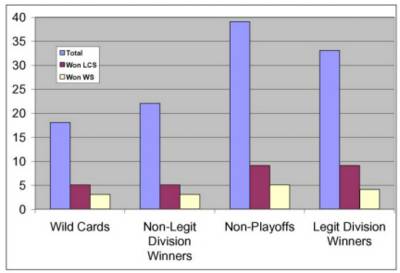

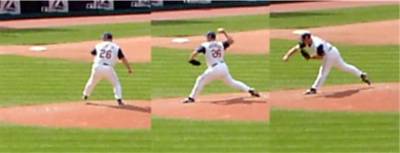
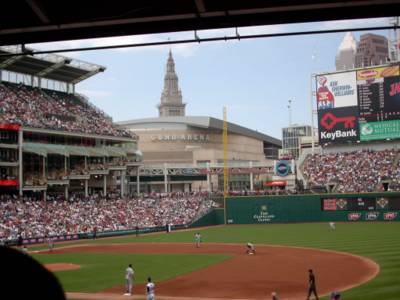



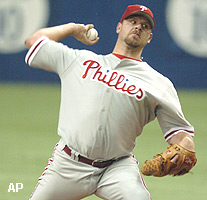


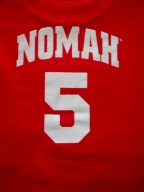
 The Red Sox ridded themselves of a highly paid player they could not re-sign, in Nomah, and a minor league outfielder who may or may not become a major league outfielder in three or four years. They received a shortstop with a good defensive rep, who has hit well in the past, but currently stinks very much bad with the bat, in
The Red Sox ridded themselves of a highly paid player they could not re-sign, in Nomah, and a minor league outfielder who may or may not become a major league outfielder in three or four years. They received a shortstop with a good defensive rep, who has hit well in the past, but currently stinks very much bad with the bat, in  From the Twins' standpoint, they've given up a firstbaseman making three million bucks who hit like a journeyman middle infielder and they got a pitching prospect, which, while not actually existing, is better than a poke in the eye with a sharp stick. It's also less expensive than paying signing bonuses to the draft picks they have gotten in return for Mientkiewicz when he left as a free agent after the season. Sadly, they had a chance to turn Mientkiewicz into Kris Benson, who, while not fooling anyone into thinking he'll ever be the player you'd expect from a #1 overall draft choice, is also exactly the #3-type starter the Twins need, instead of the three #5 starters they do have. Instead, Benson is rounding out the Mets assemblage of #3 starters, along with Steve Trachsel and Victor "JUUUUSSSTTT...A bit outside" Zambrano. You'd think these two teams could help each other out a little!
From the Twins' standpoint, they've given up a firstbaseman making three million bucks who hit like a journeyman middle infielder and they got a pitching prospect, which, while not actually existing, is better than a poke in the eye with a sharp stick. It's also less expensive than paying signing bonuses to the draft picks they have gotten in return for Mientkiewicz when he left as a free agent after the season. Sadly, they had a chance to turn Mientkiewicz into Kris Benson, who, while not fooling anyone into thinking he'll ever be the player you'd expect from a #1 overall draft choice, is also exactly the #3-type starter the Twins need, instead of the three #5 starters they do have. Instead, Benson is rounding out the Mets assemblage of #3 starters, along with Steve Trachsel and Victor "JUUUUSSSTTT...A bit outside" Zambrano. You'd think these two teams could help each other out a little!
 From the Expos standpoint, well, they got rid of a player who was clearly, vocally unhappy in Montreal, making SIX MILLION DOLLARS, or $1.5 mil per homer, and they got another shortstop making almost six million dollars, and hitting even worse. And some prospects. Hopefully the new owners will like prospects, because that all that's likely to be left by the time the team is sold.
From the Expos standpoint, well, they got rid of a player who was clearly, vocally unhappy in Montreal, making SIX MILLION DOLLARS, or $1.5 mil per homer, and they got another shortstop making almost six million dollars, and hitting even worse. And some prospects. Hopefully the new owners will like prospects, because that all that's likely to be left by the time the team is sold.
 And from the Cubs' view, they got Nomah! He's at least a ten-run upgrade on the Alex Gonzalez/Ramon Martinez platoon, offensively, and he makes that lineup all the tougher to juggle, not to mention, to pitch against successfully. They lost an overrated, overpaid, sub-mediocrity having a bad season, and a couple of prospects who may or may not turn into serviceable major leaguers, but whom nobody expects to be stars, yet. But they gained two months of a superstar shortstop, and now the Cubs have to be the favorite to win the Wild Card. A lineup whose worst-hitting regular is Corey Patterson (.757 OPS, 11 homers, 15 steals) literally has no weaknesses. And the rotation has mark Prior and Kerry (knock on)Wood back healthy, to go with Carlos Zambrano, Matt Clement and
And from the Cubs' view, they got Nomah! He's at least a ten-run upgrade on the Alex Gonzalez/Ramon Martinez platoon, offensively, and he makes that lineup all the tougher to juggle, not to mention, to pitch against successfully. They lost an overrated, overpaid, sub-mediocrity having a bad season, and a couple of prospects who may or may not turn into serviceable major leaguers, but whom nobody expects to be stars, yet. But they gained two months of a superstar shortstop, and now the Cubs have to be the favorite to win the Wild Card. A lineup whose worst-hitting regular is Corey Patterson (.757 OPS, 11 homers, 15 steals) literally has no weaknesses. And the rotation has mark Prior and Kerry (knock on)Wood back healthy, to go with Carlos Zambrano, Matt Clement and 